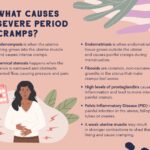Paper, seemingly innocuous and commonplace, can become an unexpected source of sharp, stinging pain. Anyone who has ever shuffled through documents or hastily turned a page knows the sudden wince that accompanies a paper cut. But why do these tiny, often bloodless wounds hurt so much more than their size would suggest? It’s a question that has puzzled many, and while it might not be a heavily researched area of science, understanding the anatomy and nature of paper cuts can reveal the surprisingly complex reasons behind the intense pain.
Dr. Hayley Goldbach, a dermatology resident physician at UCLA, offers insights based on our understanding of human anatomy. According to her, the severity of paper cut pain isn’t just bad luck; it’s deeply rooted in our biology. It boils down to a combination of factors, starting with where paper cuts most often occur and the unique properties of paper itself.
The Density of Nerve Endings in Your Fingertips
One of the primary reasons paper cuts are so painful is the location where they commonly occur: our fingertips. This area, along with our lips and face, is packed with a high concentration of nociceptors – specialized nerve endings that are designed to detect painful stimuli.
Think about it: your fingertips are your primary tools for interacting with the world. They allow you to feel textures, manipulate objects, and perform delicate tasks. To enable this level of sensitivity, evolution has equipped our fingertips with a dense network of these pain receptors.
Image demonstrating the two-point discrimination test on a hand, illustrating the high density of nerve endings in fingertips.
You can experience this nerve density firsthand with a simple “two-point discrimination” test. Take an unfolded paperclip and gently poke your fingertip with both ends simultaneously. You’ll likely feel two distinct points even when they are very close together. Try the same test on your arm or back, and you’ll notice the points need to be much further apart to be felt separately. This difference highlights the vastly greater concentration of nerve endings in areas like your fingertips.
As Dr. Goldbach explains, “Fingertips are how we explore the world, how we do small delicate tasks. So it makes sense that we have a lot of nerve endings there. It’s kind of a safety mechanism.” This evolutionary design means our brain pays extra attention to potential threats to our hands, making injuries in this area feel particularly intense as a protective measure.
The Surprisingly Jagged Edge of Paper
Beyond the sensitive location, the nature of paper itself contributes to the pain. While a sheet of paper might appear to have a smooth, straight edge to the naked eye, a microscopic view reveals a different story. Paper edges are far from clean; they are actually quite serrated, resembling a saw blade rather than a razor.
Microscopic view of a paper edge, highlighting its jagged and saw-like structure that causes tearing rather than a clean cut.
This jagged edge doesn’t slice through the skin cleanly. Instead, it rips and tears the skin tissue in a chaotic, uneven manner. Imagine the difference between being cut by a sharp, smooth knife and being scraped by a rough saw. The latter causes significantly more trauma and irritation to the nerve endings. A paper cut is more akin to this rough tearing, creating a microscopic wound that is far more disruptive than a clean incision of comparable depth.
The Agony of a Shallow Wound
Paradoxically, the shallowness of a paper cut also contributes to its lingering pain. Paper cuts are typically deep enough to penetrate the outer layer of skin (the epidermis), which lacks nerve endings, and reach the dermis, where those sensitive nociceptors reside. “They’re deep enough to get past the top layer of the skin, otherwise they wouldn’t hurt. The top layer of skin has no nerve endings,” Dr. Goldbach clarifies.
However, they aren’t deep enough to trigger significant bleeding. A deeper wound would bleed more freely, allowing blood to clot and form a protective scab. This scab acts as a natural bandage, shielding the underlying nerves and tissues from further irritation and allowing the healing process to begin effectively.
Image illustrating a shallow paper cut on a finger, emphasizing the vulnerability of exposed nerve endings to external stimuli and lack of blood clot protection.
With a paper cut, the minimal bleeding means no such protective barrier forms immediately. The nerve endings exposed by the tearing action of the paper remain open and vulnerable to the outside world. Every movement, every brush against clothing or air, can stimulate these exposed pain receptors, sending repeated pain signals to the brain. This constant exposure and lack of natural protection prolong the sensation of pain, making paper cuts seem to hurt for an extended period, disproportionate to their size.
In conclusion, the intense pain of a paper cut is not just a minor annoyance, but a result of a perfect storm of biological and physical factors. The high density of nerve endings in our fingertips, the jagged, tearing nature of paper edges, and the shallow, non-bleeding wound all combine to create a surprisingly painful experience. While a single paper cut is unlikely to cause serious harm, understanding the science behind the sting helps to appreciate the intricate workings of our bodies and the unexpected ways even the most mundane objects can cause us discomfort.
